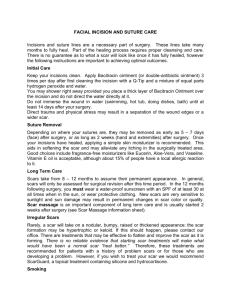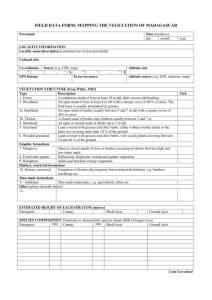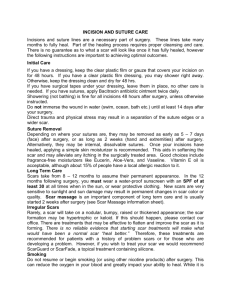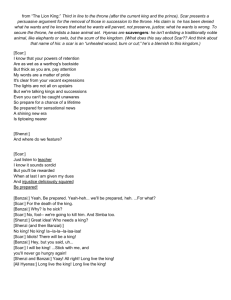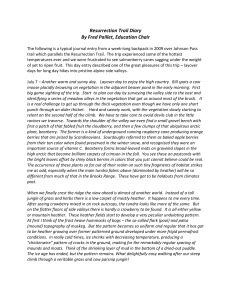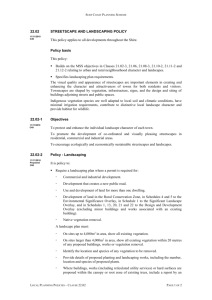New Site Network Field Campaign Update
advertisement
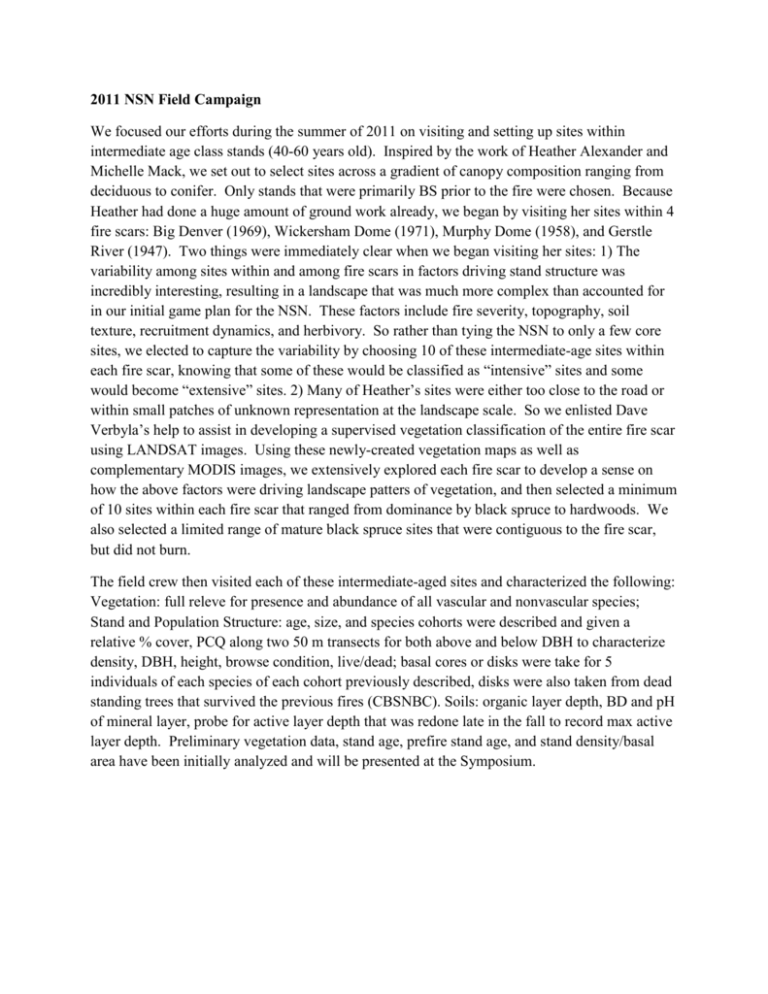
2011 NSN Field Campaign We focused our efforts during the summer of 2011 on visiting and setting up sites within intermediate age class stands (40-60 years old). Inspired by the work of Heather Alexander and Michelle Mack, we set out to select sites across a gradient of canopy composition ranging from deciduous to conifer. Only stands that were primarily BS prior to the fire were chosen. Because Heather had done a huge amount of ground work already, we began by visiting her sites within 4 fire scars: Big Denver (1969), Wickersham Dome (1971), Murphy Dome (1958), and Gerstle River (1947). Two things were immediately clear when we began visiting her sites: 1) The variability among sites within and among fire scars in factors driving stand structure was incredibly interesting, resulting in a landscape that was much more complex than accounted for in our initial game plan for the NSN. These factors include fire severity, topography, soil texture, recruitment dynamics, and herbivory. So rather than tying the NSN to only a few core sites, we elected to capture the variability by choosing 10 of these intermediate-age sites within each fire scar, knowing that some of these would be classified as “intensive” sites and some would become “extensive” sites. 2) Many of Heather’s sites were either too close to the road or within small patches of unknown representation at the landscape scale. So we enlisted Dave Verbyla’s help to assist in developing a supervised vegetation classification of the entire fire scar using LANDSAT images. Using these newly-created vegetation maps as well as complementary MODIS images, we extensively explored each fire scar to develop a sense on how the above factors were driving landscape patters of vegetation, and then selected a minimum of 10 sites within each fire scar that ranged from dominance by black spruce to hardwoods. We also selected a limited range of mature black spruce sites that were contiguous to the fire scar, but did not burn. The field crew then visited each of these intermediate-aged sites and characterized the following: Vegetation: full releve for presence and abundance of all vascular and nonvascular species; Stand and Population Structure: age, size, and species cohorts were described and given a relative % cover, PCQ along two 50 m transects for both above and below DBH to characterize density, DBH, height, browse condition, live/dead; basal cores or disks were take for 5 individuals of each species of each cohort previously described, disks were also taken from dead standing trees that survived the previous fires (CBSNBC). Soils: organic layer depth, BD and pH of mineral layer, probe for active layer depth that was redone late in the fall to record max active layer depth. Preliminary vegetation data, stand age, prefire stand age, and stand density/basal area have been initially analyzed and will be presented at the Symposium.


